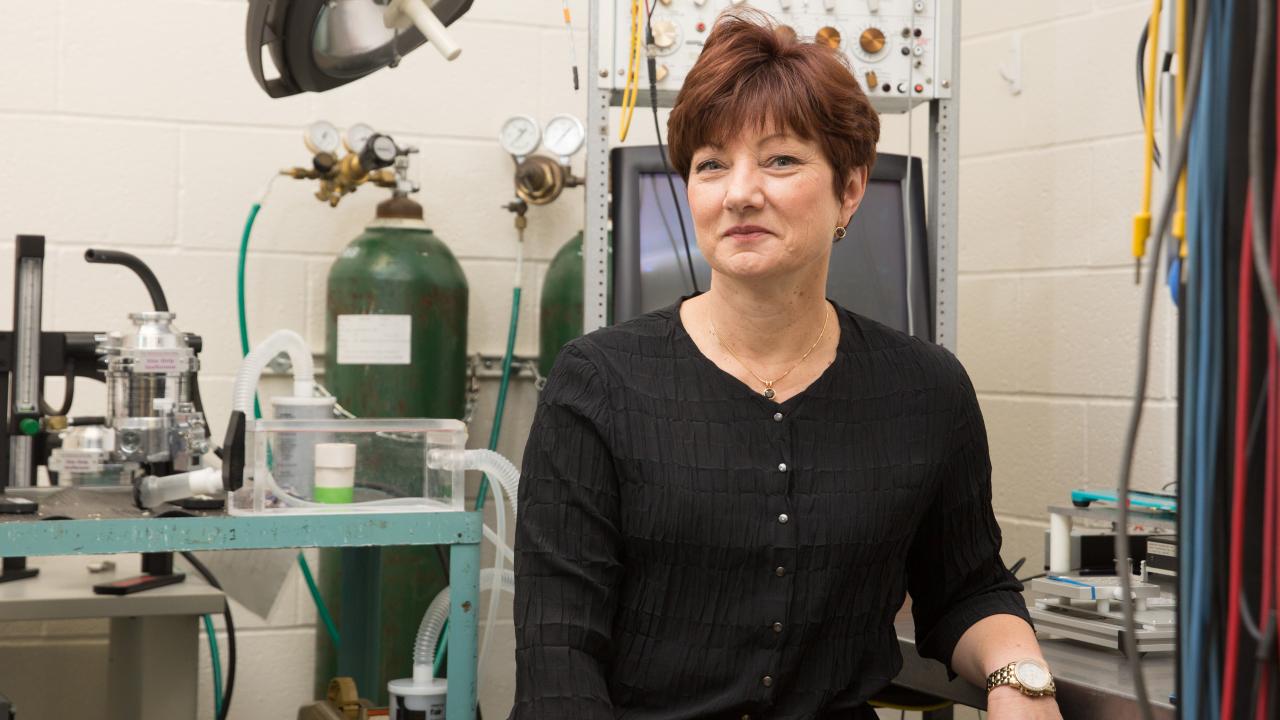Quick Summary
- Exercise is good for you — but why?
- MoTrPAC to investigate molecular changes that come from physical activity
- National Institutes of Health investing $170 million nationally over six years
We know that exercise is good for you. But why, and how? The National Institutes of Health today (Dec. 13) announced a six-year, $170 million nationwide project to dig deep into the molecular changes that come from physical activity, and how they influence health. Two professors in the University of California, Davis, College of Biological Sciences, Sue Bodine and Keith Baar, are taking part in the effort.
“We have long understood that exercising is beneficial to our overall health, but don’t fully understand the impact of exercise at the molecular level,” said NIH Director Francis S. Collins. “The development of a so-called molecular map of circulating signals produced by physical activity will allow us to discover, at a fundamental level, how physical activity affects our health. This knowledge should allow researchers and doctors to develop individually targeted exercise recommendations and better help those who are unable to exercise.” Hear more from Collins in this video.
The Molecular Transducers of Physical Activity Consortium, or MoTrPAC, will include seven clinical centers across the country, including one at UC Irvine focused on children. The clinical centers will recruit people from diverse racial and ethnic groups, aged from childhood to old age, and examine how molecular signals are altered by exercise.
The UC Davis researchers will run one of three centers using rats as a model to understand exercise physiology. Working in tandem with the clinical centers, the animal model will allow researchers to more fully explore the effects of exercise on organs and body systems.
More than building muscle
Understanding the role of exercise in health is increasingly important as our lives become more sedentary, Bodine said.
“The general population is inactive, and it’s getting worse,” she said. Your doctor might recommend that you take up exercise or become more active, but physicians aren’t trained in how to prescribe different types of exercise for different needs. Exercise is known to affect mood and cognition as well as physical attributes such as heart health and muscle strength, but the mechanisms are largely unknown.
“Nobody would question that exercise is good for you,” Bodine said. “What we don’t understand is, what are the signals and pathways that lead from exercise to improved health.”
Among the questions the consortium hopes to answer are how different kinds of exercise, such as endurance exercises like running or resistance exercise such as weightlifting, affect health, and how the effects of exercise change over our lifespan.
“When we think about exercise, we think about muscle, heart and lungs, but we also know that exercise has effects on the brain, on cognition, on cancer prevention,” Bodine said. “How does exercise do these things?”
Other centers will carry out analytical work on tissue samples from both humans and animals. The resulting data and tissue banks will be available to other researchers.
The UC Davis share of the grant will be approximately $2.3 million.
The consortium is funded through the NIH Common Fund and managed by the National Institute of Arthritis and Musculoskeletal and Skin Diseases, National Institute of Diabetes and Digestive and Kidney Diseases, National Institute on Aging, and National Institute of Biomedical Imaging and Bioengineering.
Media Resources
Andy Fell, UC Davis News and Media Relations, 530-752-4533, ahfell@ucdavis.edu
Sue Bodine, Neurobiology, Physiology and Behavior, 530-752-0694, scbodine@ucdavis.edu
